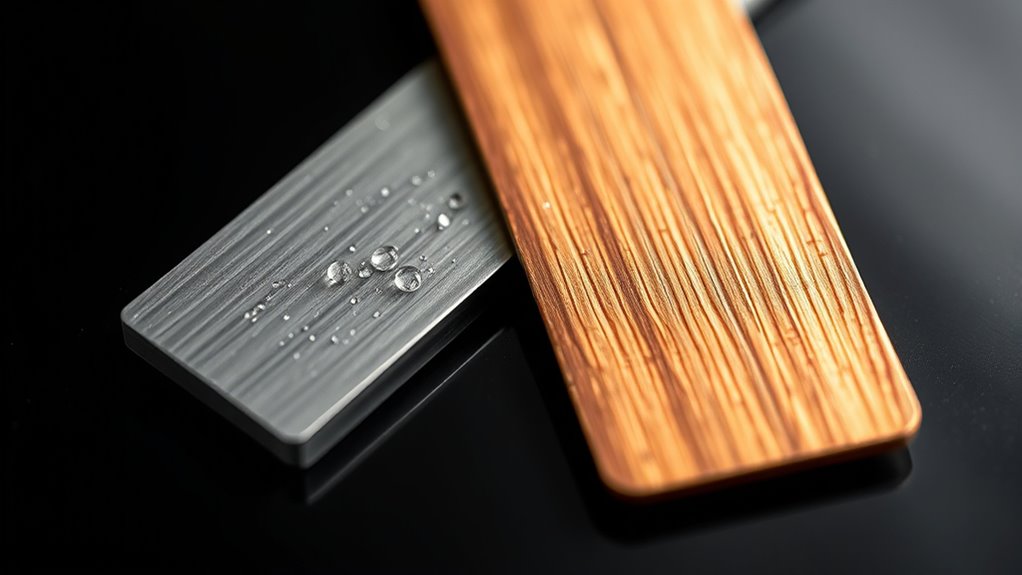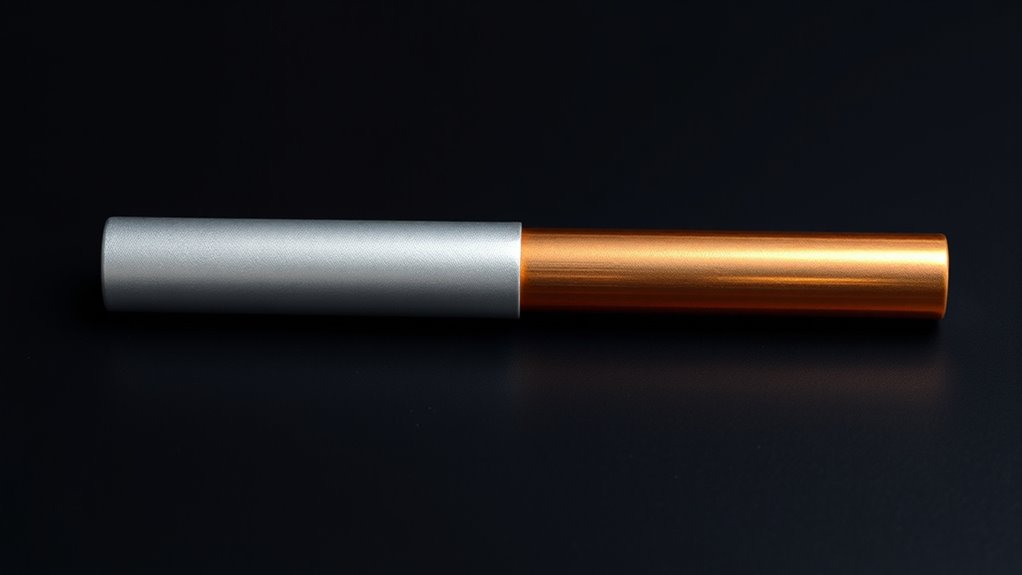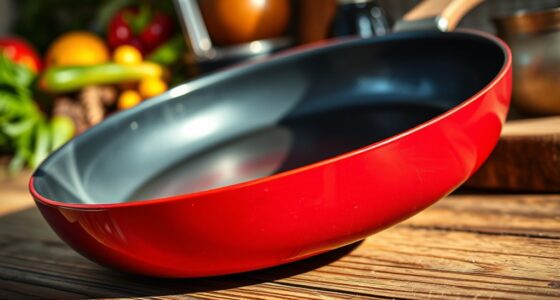When comparing aluminum and copper for heat conductivity, copper clearly outperforms aluminum by transferring heat more efficiently. Copper’s higher thermal conductivity means it disperses heat faster, reducing overheating risks and improving thermal stability. Aluminum, while lighter and more affordable, offers lower heat transfer capabilities, which might be acceptable in less demanding applications. To understand how these differences affect your project specifics, keep exploring the key factors that influence thermal performance and material choice.
Key Takeaways
- Copper has significantly higher heat conductivity than aluminum, enabling more efficient heat transfer.
- Copper’s superior heat transfer reduces overheating risks in electrical and thermal applications.
- Aluminum’s lower heat conductivity makes it less effective at dissipating heat but lighter and more cost-effective.
- Copper maintains more stable thermal performance under temperature fluctuations, supporting reliable operation.
- The choice between aluminum and copper depends on balancing thermal efficiency, weight, and cost considerations.

When choosing between aluminum and copper for electrical wiring or other applications, understanding their key differences can help you make an informed decision. One of the most important factors to take into account is heat conductivity, which directly impacts how efficiently each material transfers heat. Copper has a higher heat conductivity than aluminum, meaning it can transfer heat more effectively. This makes copper ideal for applications where heat dissipation is vital, such as in high-power electrical systems or components that generate significant heat. The superior heat transfer ability of copper also reduces the risk of overheating, which can prolong the lifespan of your wiring and prevent failures.
However, aluminum isn’t far behind. While its heat conductivity is lower than copper’s, it still offers decent thermal performance at a lower cost. Aluminum’s heat conductivity is approximately 50% that of copper, which means it doesn’t transfer heat as efficiently but can still be used effectively in many applications. Its lighter weight makes it attractive for large-scale projects like power transmission lines, where reducing weight is a major advantage. When pondering heat conductivity, you also need to think about how each material responds to temperature changes and how quickly it can dissipate heat under load. Copper’s better heat transfer can lead to less thermal buildup and more stable operation in demanding environments.
Beyond heat transfer, electrical conductivity plays a vital role in material choice. Copper boasts a higher electrical conductivity than aluminum, which means less current loss and better overall performance in electrical applications. This higher conductivity translates into lower energy costs and increased efficiency, especially over long distances or in high-current scenarios. Aluminum’s lower electrical conductivity requires larger wire gauges to carry the same current, which can offset some of its cost advantages and make installation more cumbersome.
Additionally, the cost-effectiveness of aluminum makes it a popular choice despite its slightly inferior heat and electrical conductivities, especially in applications where weight savings are crucial. Copper’s resistance to corrosion remains superior, especially when properly coated or maintained, ensuring consistent thermal and electrical performance over time. Aluminum, on the other hand, is more prone to corrosion, particularly when exposed to moisture or certain environmental conditions, which can affect its heat transfer capabilities. To mitigate this, aluminum wiring often requires special coatings or fittings to prevent corrosion and maintain ideal heat conductivity.
Frequently Asked Questions
How Does Corrosion Affect Aluminum and Copper Heat Transfer?
Corrosion effects can considerably reduce aluminum and copper’s heat transfer efficiency. When these metals corrode, their surfaces develop insulating layers that hinder thermal conduction. Over time, corrosion causes thermal degradation, weakening the metal’s ability to transfer heat effectively. You should regularly inspect and maintain these materials to prevent corrosion buildup, ensuring ideal heat transfer and avoiding costly system failures. Proper protective coatings can also help minimize corrosion effects.
Which Material Is More Cost-Effective Over Long-Term Use?
Imagine a pipe that stays reliable through countless seasons—you’re looking for durability and savings. Over the long term, copper often proves more cost-effective due to its superior longevity comparison, resisting corrosion better and maintaining heat transfer efficiency. A solid cost analysis reveals that while aluminum may be cheaper initially, copper’s durability and lower maintenance needs make it a smarter investment for lasting performance and reduced replacement costs.
Can Aluminum and Copper Be Used Interchangeably in Electronics?
You can’t really use aluminum and copper interchangeably in electronics because they differ in electrical conductivity and mechanical strength. Copper offers higher electrical conductivity and is stronger, making it ideal for precise, durable connections. Aluminum, while lighter and more cost-effective, has lower conductivity and is more prone to mechanical issues. So, choosing between them depends on your specific needs, but they’re not directly interchangeable without adjustments.
How Do Structural Differences Impact Thermal Expansion?
You should know that structural differences vital impact thermal expansion. Aluminum’s lighter, more flexible structure causes it to expand and contract more with temperature changes, which can lead to stress or deformation in assemblies. Copper, being denser and more rigid, has less thermal expansion, providing greater dimensional stability. These structural impacts are essential when designing electronics or structures that face temperature fluctuations, ensuring components stay secure and function properly.
Are There Environmental Concerns With Mining Aluminum Versus Copper?
They say “you are what you mine,” and it’s true for aluminum and copper. Mining aluminum often has a lower environmental impact due to less harmful emissions, but recycling aluminum reduces its overall footprint. Copper mining, however, produces significant emissions and environmental disruption. Your choices matter—opting for recycled materials lessens mining impacts, making a difference in reducing emissions and conserving resources.
Conclusion
So, when choosing between aluminum and copper for heat conduction, consider what matters most to you—cost, weight, or efficiency. Aluminum offers a lighter, more affordable option, but copper excels in thermal performance. Are you willing to compromise on weight or budget for better heat transfer? Ultimately, your decision depends on your specific needs. Which material will serve your project best—lightweight aluminum or high-conductivity copper? The choice is yours.








